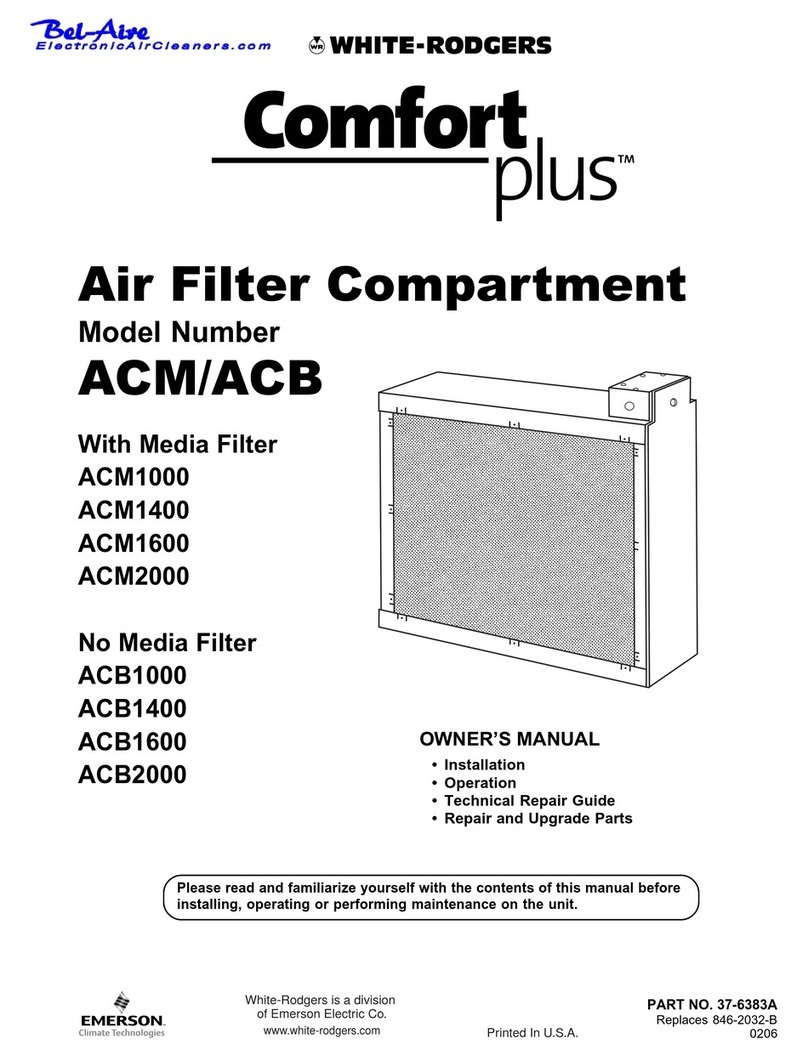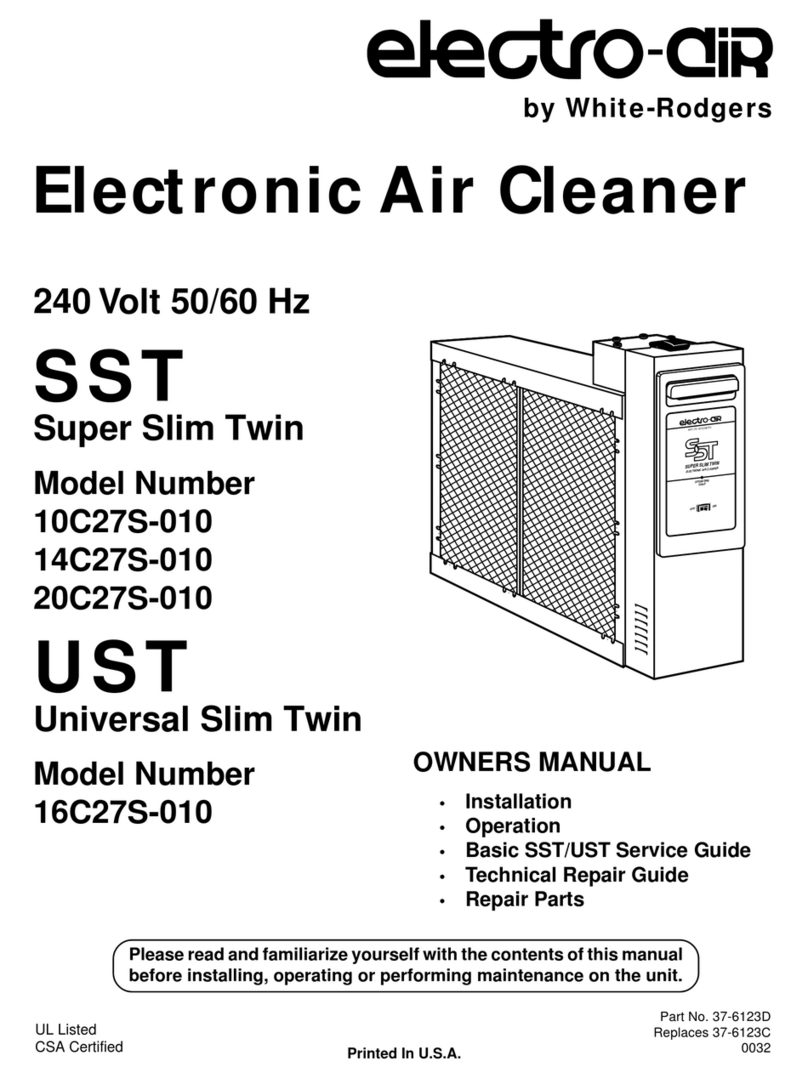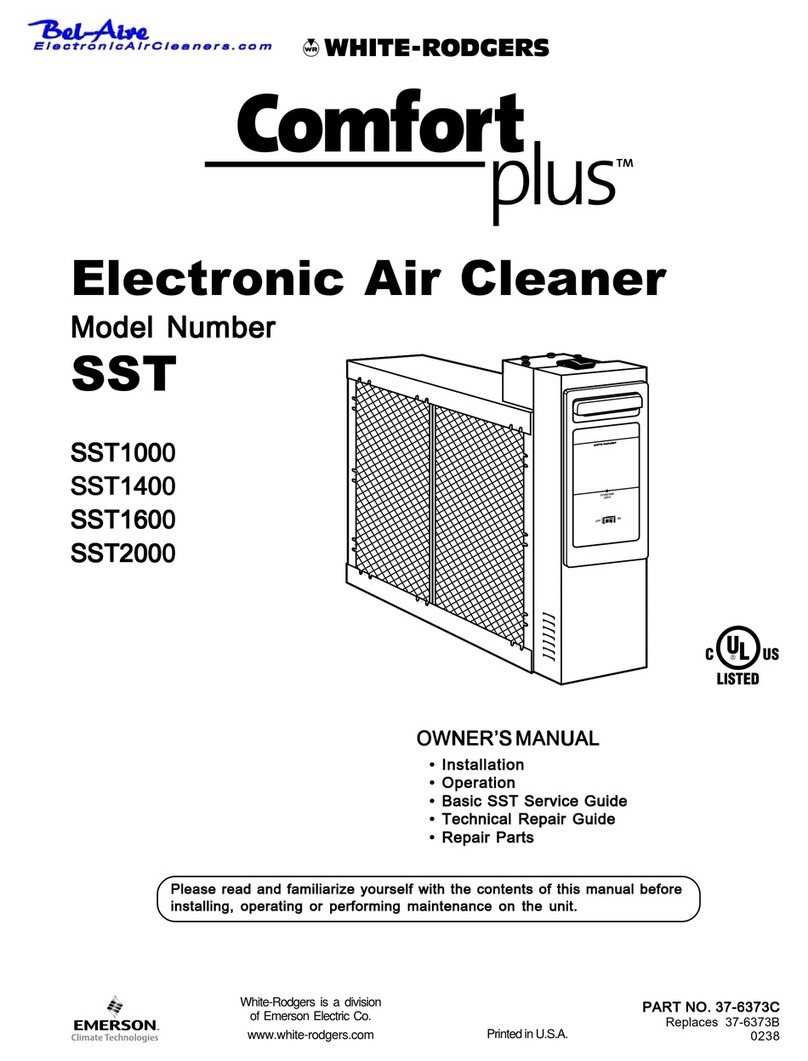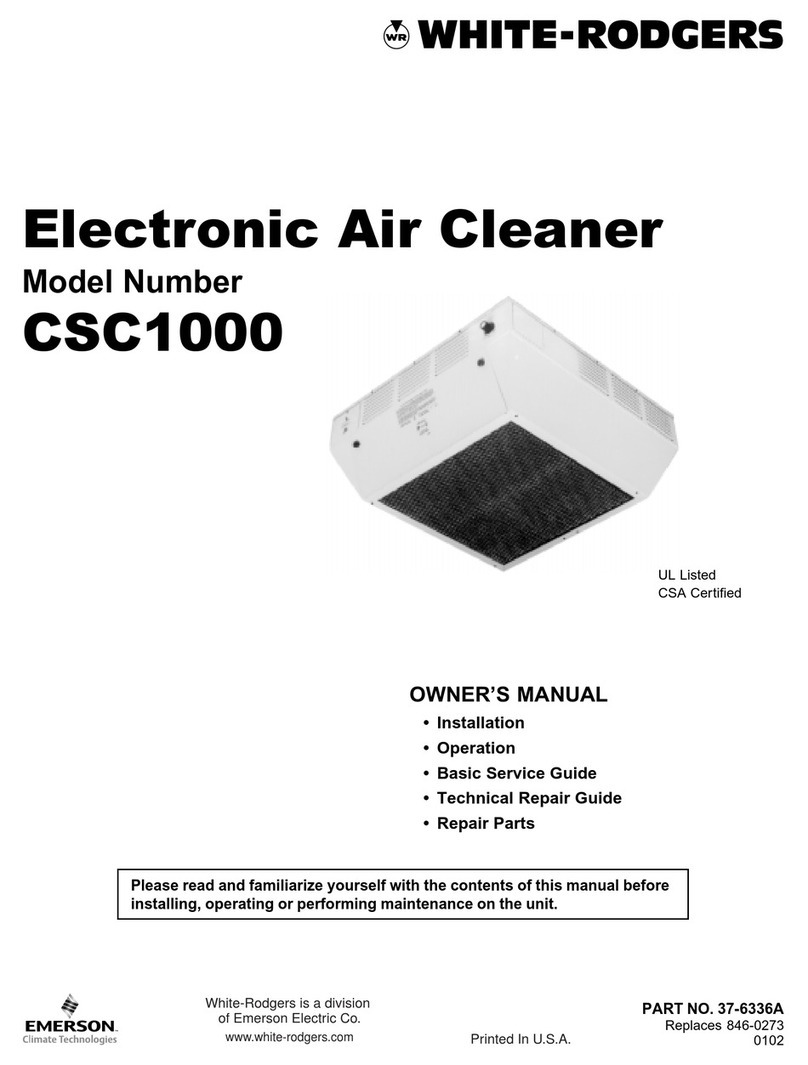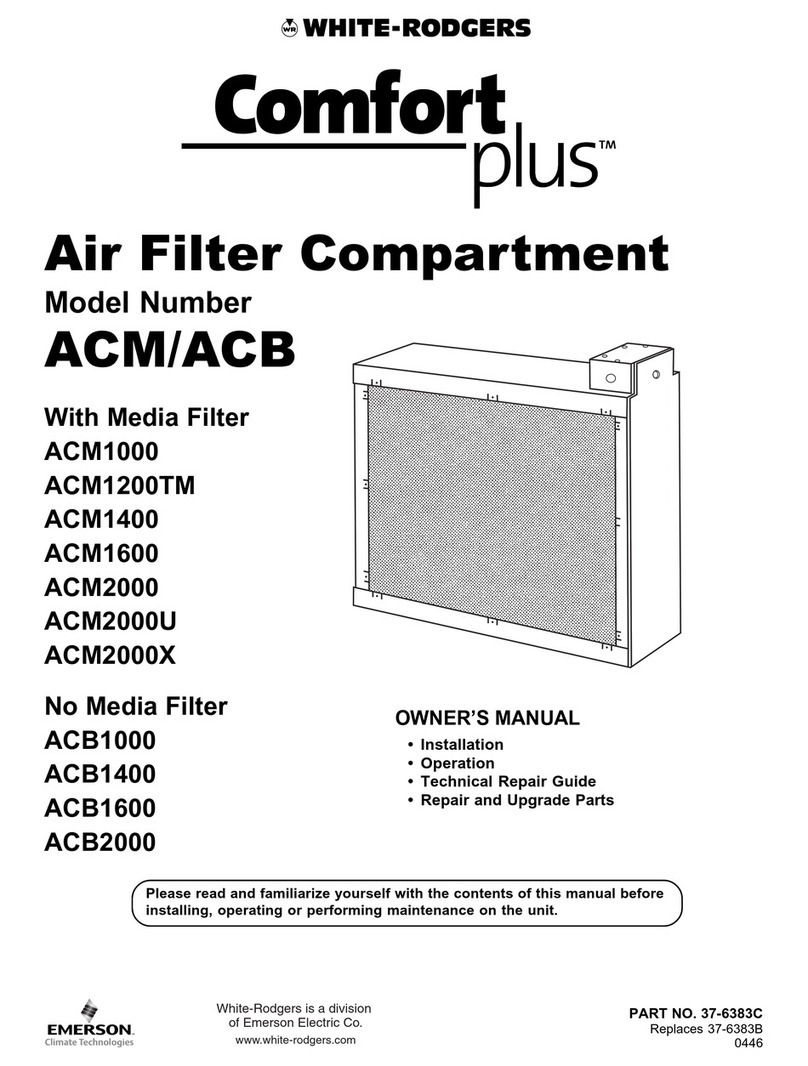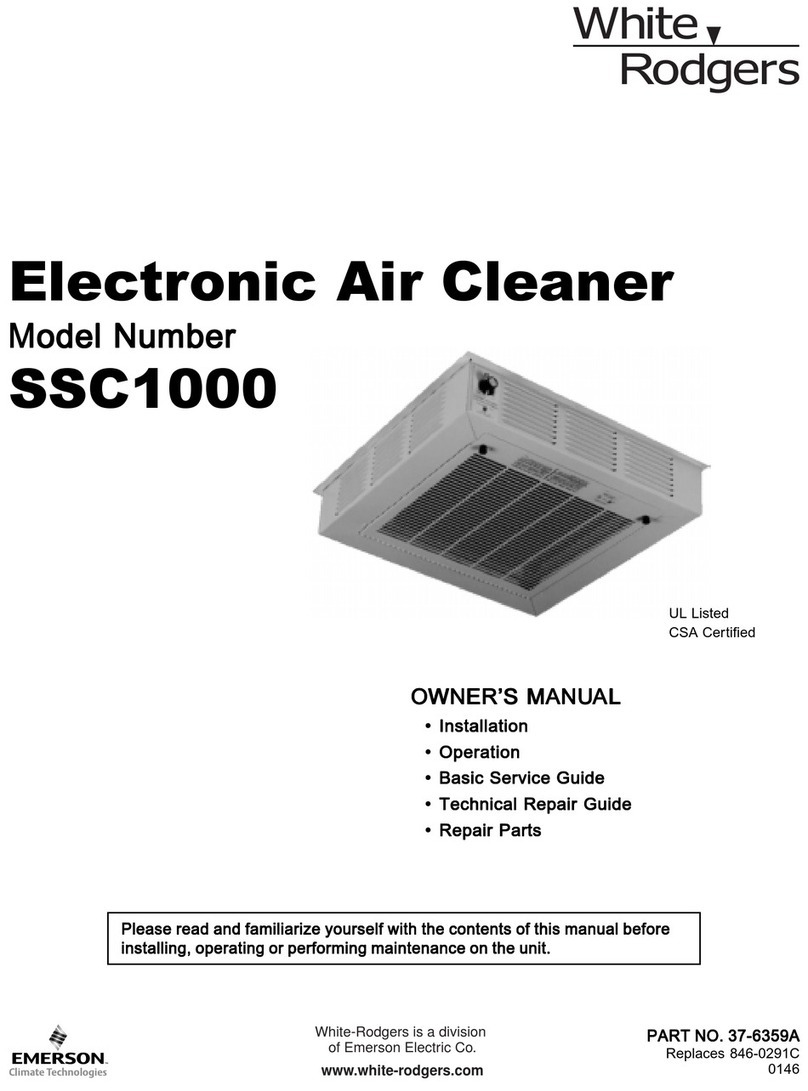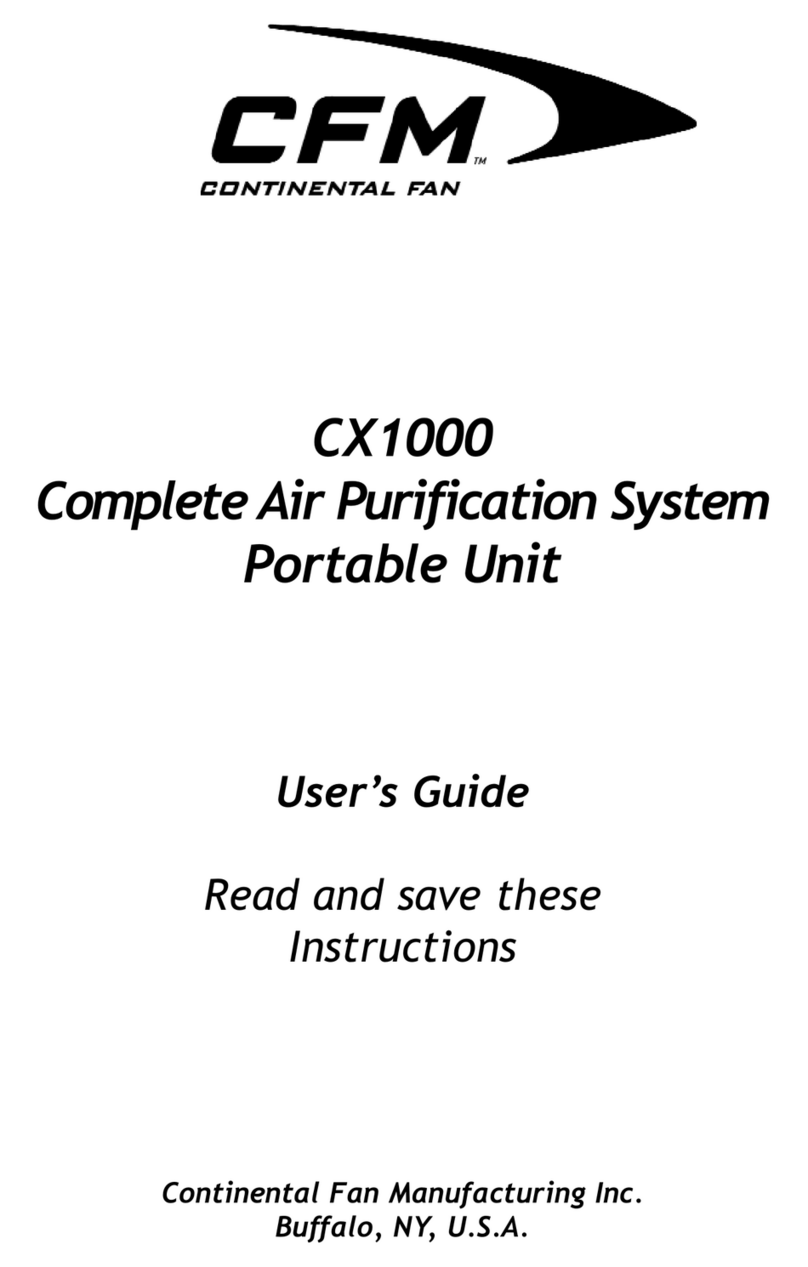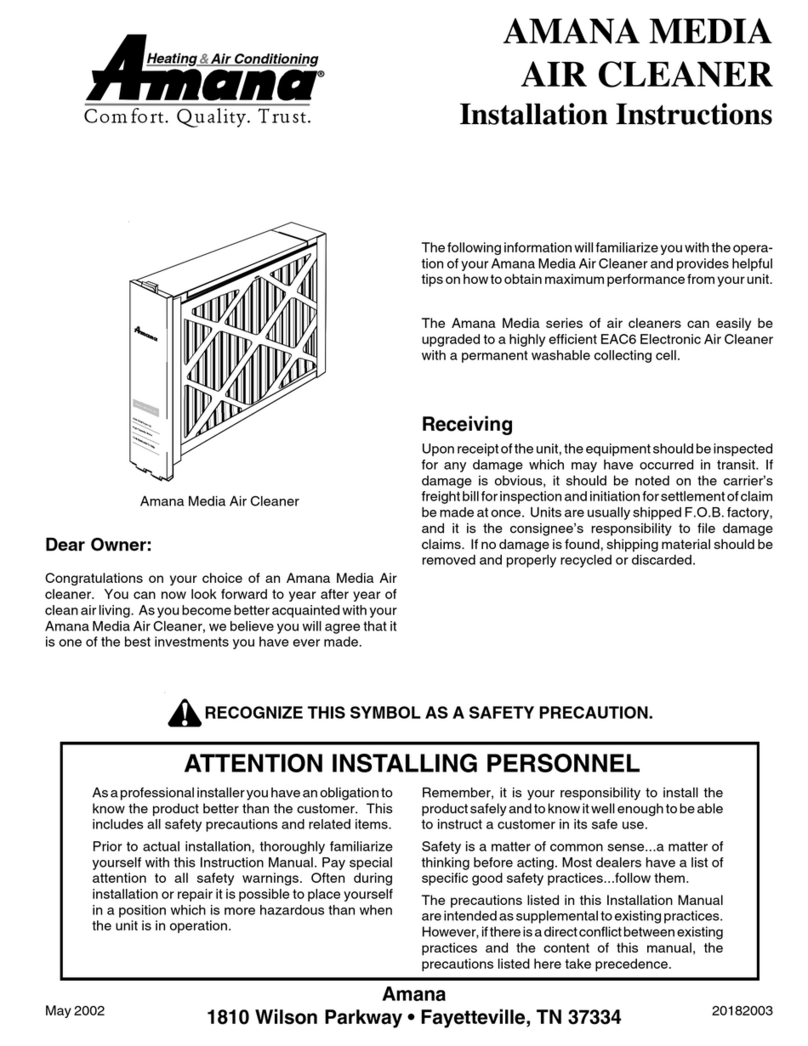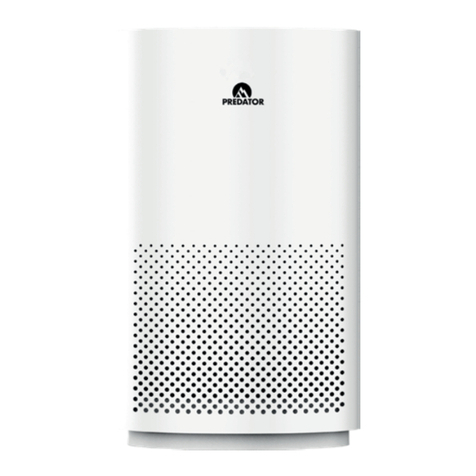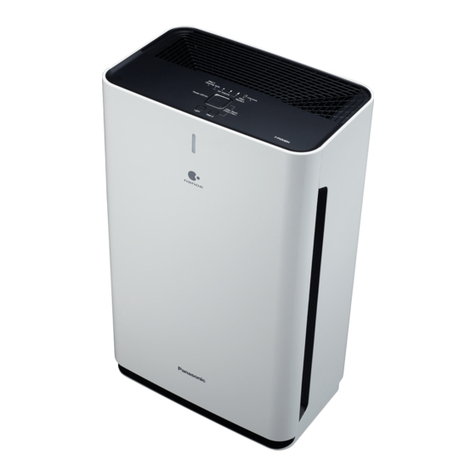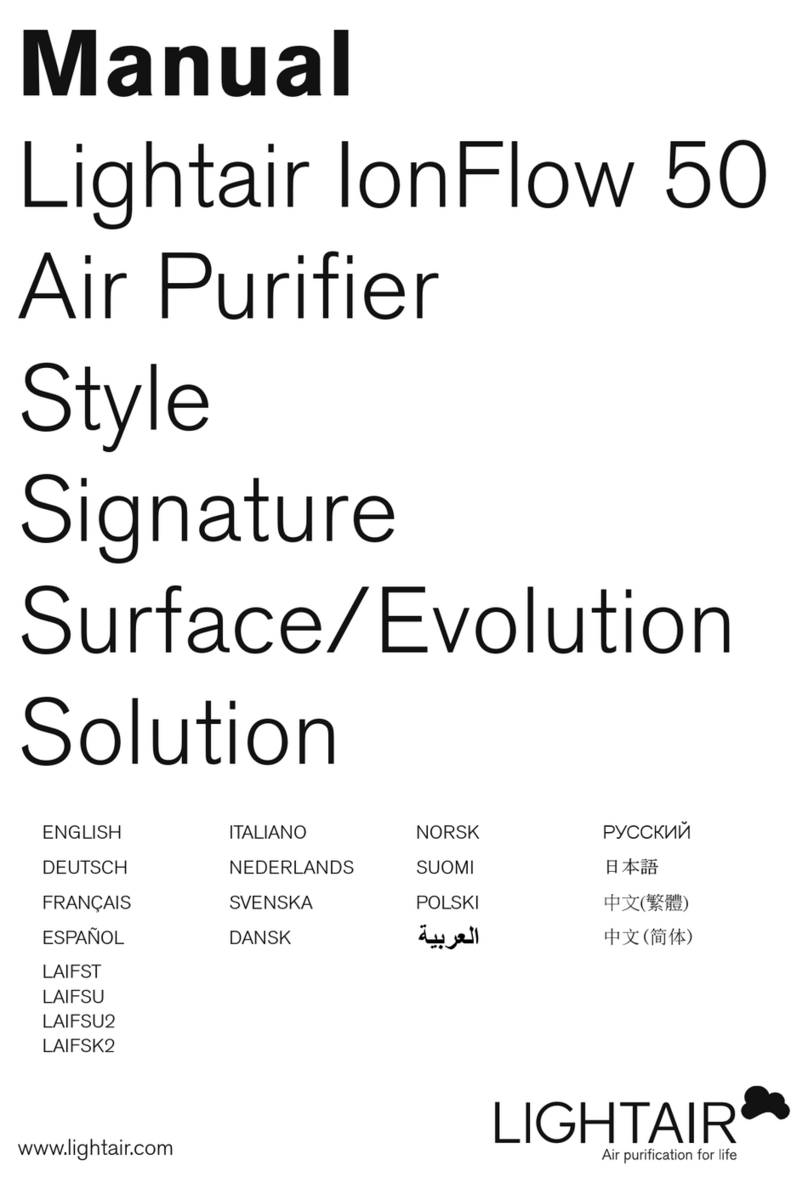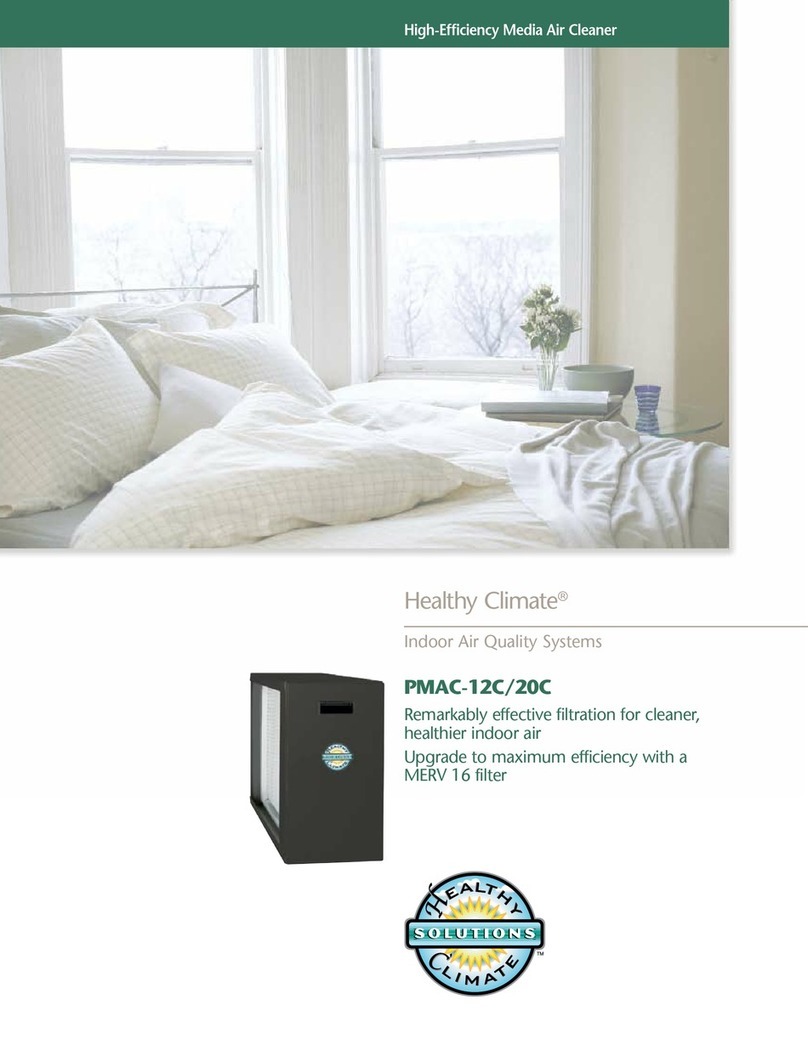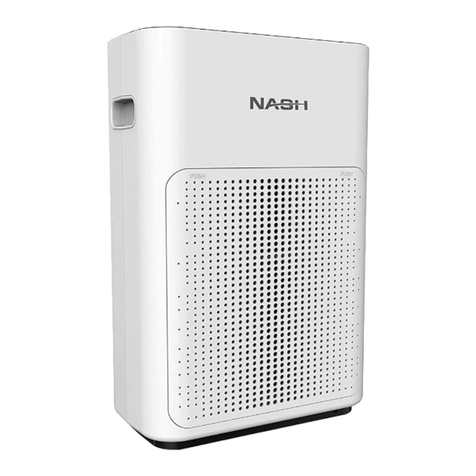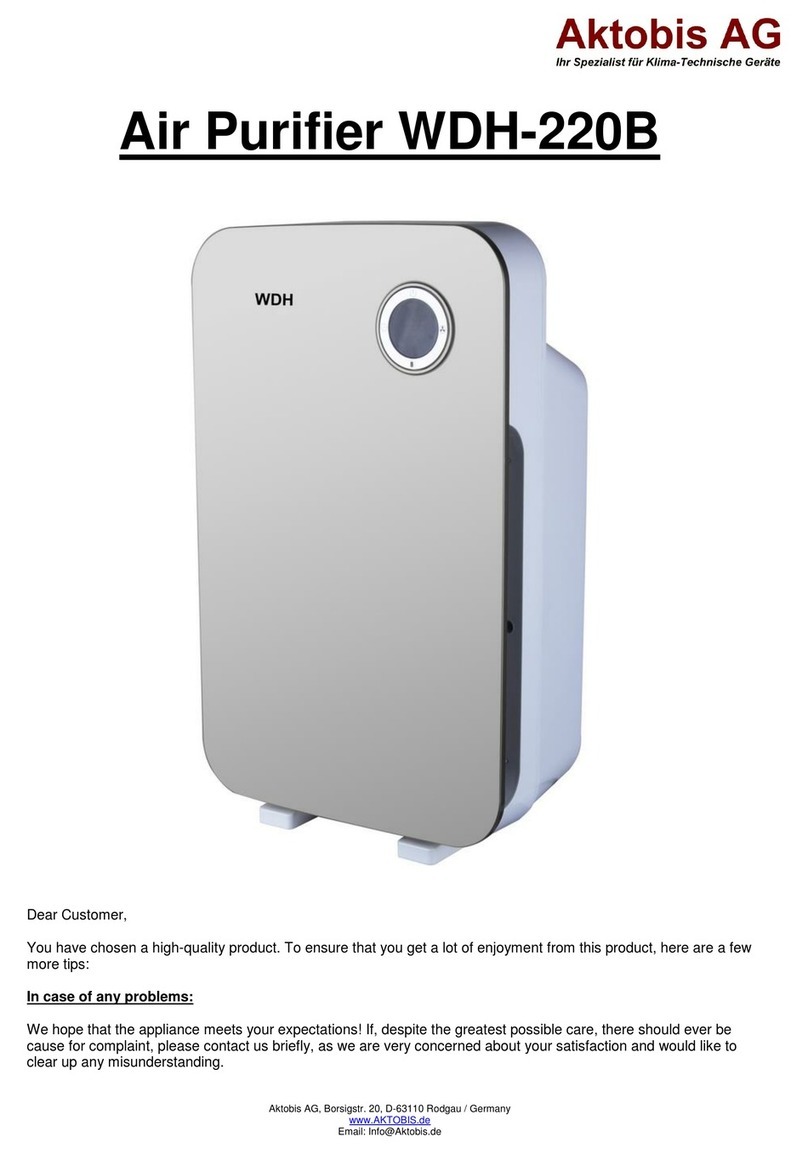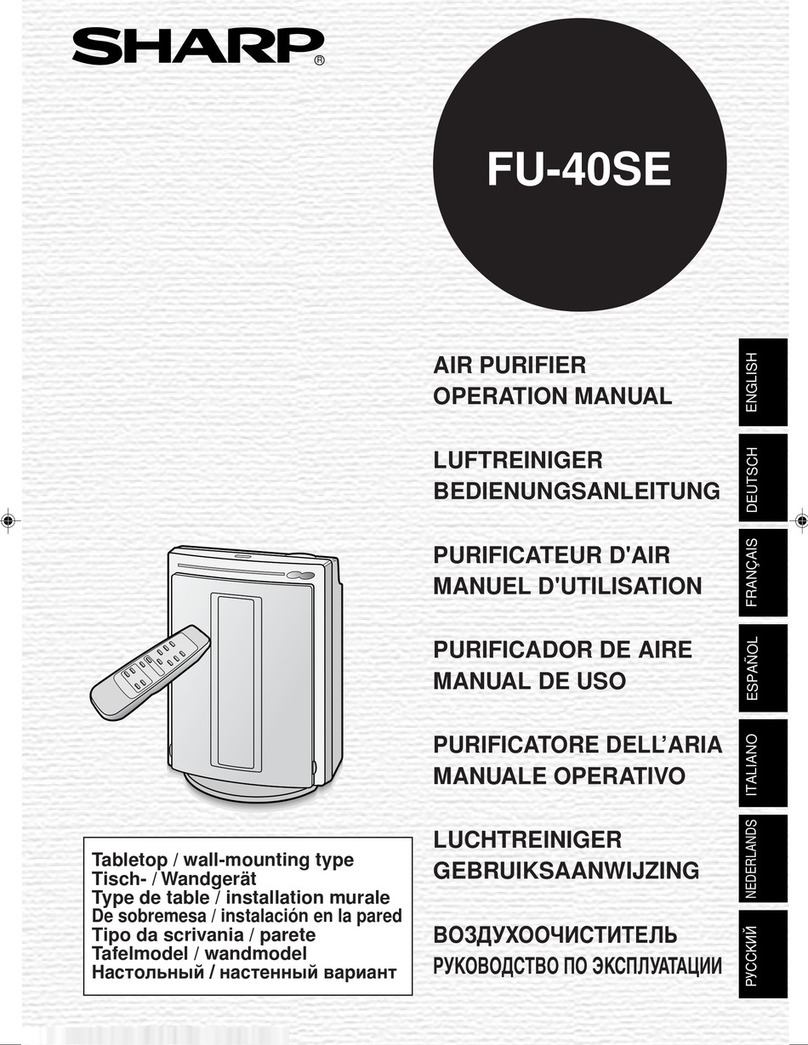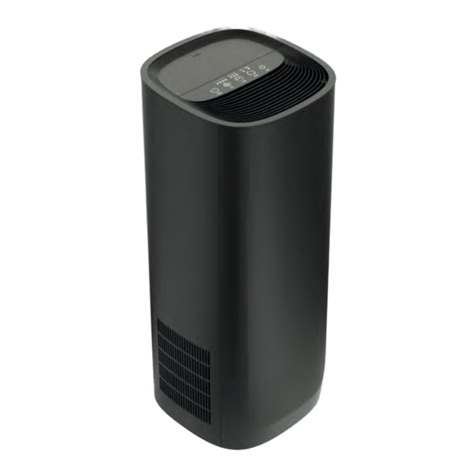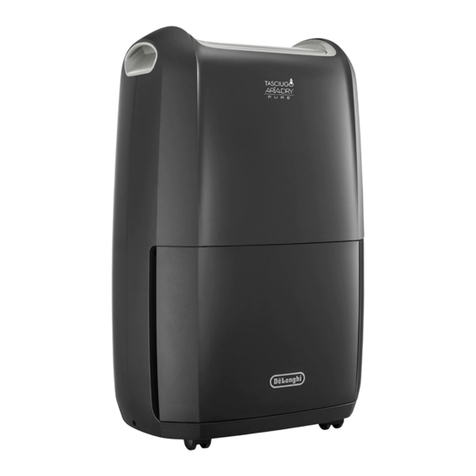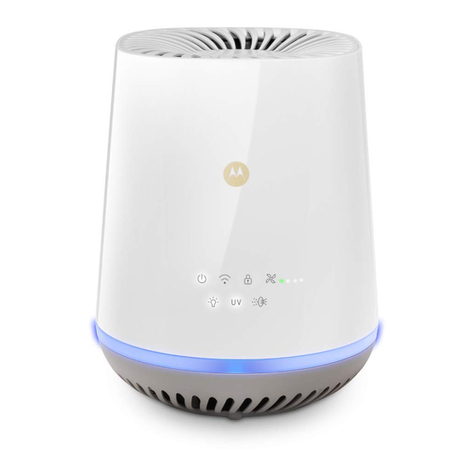
HOW THE AIR CLEANER WORKS
Dirt particles flowing through the ducts (Figure 1) first enters
the pre-filters (A) where large particles (hair, lint, etc.) are
trapped. Smaller particles (smoke, dust, pollen, etc.) pass
through these pre-filters and enter the ionizing section (B).
Here each tiny particle receives a positive electrical charge.
These charged particles then enter the collecting section
(C). This section consists of a series of aluminum plates
which are alternately charged negative and positive.
The positive charge of the particles cause them to be
repelled by the positive plates and attracted to the negative
plates where they are collected.., just as a magnet attracts
iron filings.
Clean-filtered air re-enters the supply duct system.
White Dust (Lint)
An Electronic Air Cleaner is designed to collect two major
types of contaminants: ¢ Irritants (Pollens, Spores, Molds,
Bacteria, etc.) and @ Black Soiling Contaminants (Dirt and
Smoke particles).
The residue on the collecting plates of an electronic air
cleaner is black, indicating it is removing dirt from the air
stream. After installing an air cleaner you may notice white
dust (typically, long linty particles or fibers - from carpets,
cotton materials or drapery fabrics). This material is not
collected by the air cleaner because it does not contain the
irritants or soiling contaminants listed above or settles out of
the air before reaching the air cleaner. The presence of
white dust does not indicate an air cleaner requires service.
A\B
)
m
c
/
-_l Clean Air Out
Figure 1
Carbon (Charcoal) Filters
Odors are gas molecules, not particles. They cannot be
removed by an Electronic Air Cleaner or by any other
filtration media designed to remove airborne particles.
However, some gases can be absorbed by an activated
carbon filter or diluted with fresh outdoor air. When odors
are present, the addition of charcoal filters will neutralize
odors, such as cooking odors, pet odors, cigar and cigarette
odors, ozone, etc. Optional charcoal filters are available for
your Air Cleaner. Refer to the parts list for the charcoal filter
part number for your Air Cleaner. Charcoal filters require
replacement. They cannot be washed. While there is no rule
of thumb for how often they should be changed, you can
use your best judgement based on the odors you perceive
in your environment.
CONSTRUCTION OF THE AIR CLEANER
Not only is your air cleaner easy to install, it is also easy to
operate and maintain. Its basic components, and their
functions, are as follows: (See Figure 2)
Cabinet - mounts to existing duct work and houses the
collecting cells and pre-filters.
Collecting Cells - are made in two sections and perform the
actual collecting of dust, dirt, and other impurities
from the air. They contain the ionizing and collec-
tion sections described above.
Each cell must be installed with the ionizing wires
on the air entering side. Each cell must be oriented
with the handles and contact button (Figure 2)
toward the operator.
Pre-filters - are in two sections which are interchangeable.
They serve as a pre-filter to trap large particles
such as hair and lint before they can enter the cell
sections.
Power Pack- contains operating and power on lights as well
as the solid state components that convert the 120
volt power supply to the high-voltage, direct current
required for the collecting cell.
Cabinet
+
/
Contact
Button
Pre-Fitters
Collecting Cells
Figure 2
Handle
Contact
Button +
Power Pack
